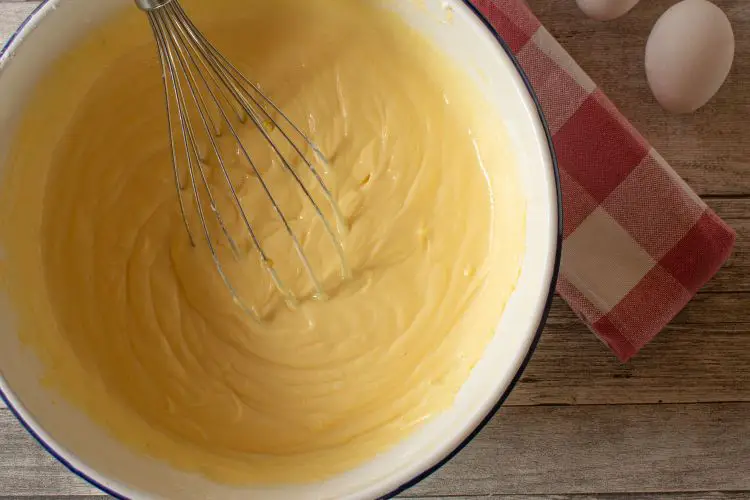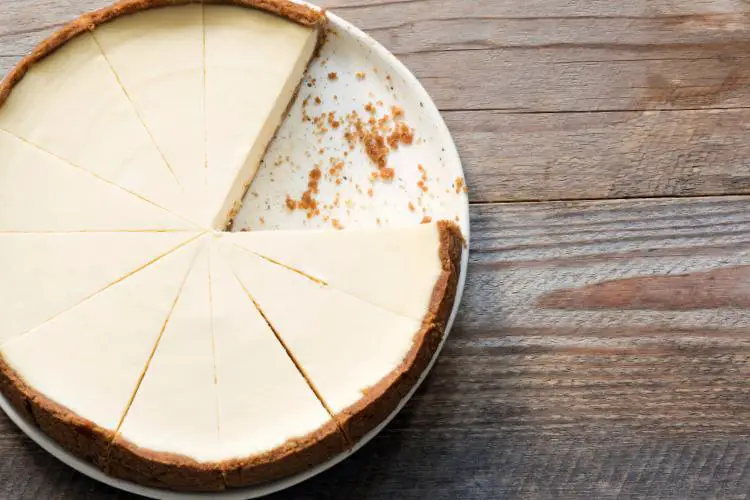How to Thicken Cheesecake Filling? To thicken cheesecake filling, you can start by using room temperature cream cheese to ensure smooth blending. Gradually add cornstarch or flour to the mixture, which will act as a thickening agent. Additionally, incorporating eggs and sour cream helps achieve a denser and thicker consistency while baking.
Data Table: Methods How to Thicken Cheesecake Filling
| Method | Effect on Thickness | Flavor and Texture Impact |
| Adjust Cream Cheese Ratio | Increases thickness | Creamier and denser texture |
| Utilize Greek Yogurt | Enhances thickness | Adds tanginess and creaminess |
| Introduce Cornstarch | Thickens filling | No significant flavor impact |
| Incorporate Sour Cream | Increases thickness | Adds a slight tanginess |
| Experiment with Heavy Cream | Adds thickness and richness | Richer and creamier texture |
| Reduce the Number of Eggs | Reduces airiness | Denser texture |
| Extend Baking Time | Evaporates moisture | Thicker and less moist texture |
| Opt for a Water Bath | Gentle, even cooking | Maintains thickness throughout |
Key Takeaways
- The texture of your cheesecake filling is predominantly determined by the ingredients you use and the baking process.
- To achieve a thicker cheesecake filling, consider adjusting the cream cheese ratio, incorporating Greek yogurt, adding cornstarch, sour cream, or heavy cream, using fewer eggs, extending the baking time, or opting for a water bath.
- Experiment with these methods to find the perfect balance of thickness and creaminess for your cheesecake.
- Personal preferences for cheesecake texture vary, so feel free to tailor your recipe to your liking.

Understanding Cheesecake Filling
Before delving into the methods of thickening cheesecake filling, let’s first understand the essential components of this delectable dessert.
The cheesecake filling is the heart of any cheesecake, responsible for its flavor, texture, and overall appeal.
The primary ingredients in cheesecake filling include cream cheese, sugar, eggs, and flavorings.
Cream cheese provides the creamy and rich base, sugar adds sweetness, eggs act as binders, and flavorings such as vanilla extract or lemon zest contribute to the overall taste. Achieving the ideal thickness while maintaining a creamy texture is the goal.
Methods to Thicken Cheesecake Filling
Now, let’s explore several effective methods to make your cheesecake filling thicker:
1. Adjust the Cream Cheese Ratio
One of the simplest ways to achieve a thicker cheesecake filling is by increasing the amount of cream cheese in your recipe.
Cream cheese is the primary source of creaminess in the filling, so adding more can result in a denser texture. Consider adding an extra 4 to 8 ounces of cream cheese to your recipe to enhance thickness.
2. Utilize Greek Yogurt
Greek yogurt can be an excellent addition to your cheesecake filling. Not only does it contribute to thickness, but it also imparts a delightful tanginess.
Replace a portion of the cream cheese with an equal amount of Greek yogurt for a thicker and slightly tangy filling.

3. Introduce Cornstarch
Cornstarch is a common thickening agent used in cooking and baking. Mixing a tablespoon or two of cornstarch into your filling can effectively thicken it.
Ensure that the cornstarch is fully dissolved in the cream cheese mixture to prevent lumps.
4. Incorporate Sour Cream
Sour cream can add richness and thickness to your cheesecake filling while imparting a subtle tanginess.
Substitute a portion of the cream cheese with an equal amount of sour cream for an enhanced texture.
5. Experiment with Heavy Cream
Heavy cream is another ingredient that can contribute to thickness and creaminess in your cheesecake filling.
Replace some of the milk or cream in your recipe with heavy cream for a denser result.
6. Reduce the Number of Eggs
Eggs play a crucial role in binding the cheesecake and providing structure.
By reducing the number of eggs in your recipe or using only egg yolks, you can achieve a denser and less airy texture.

7. Extend Baking Time
Baking your cheesecake for a longer duration can help eliminate excess moisture and result in a thicker consistency.
It’s essential to monitor the baking process closely to prevent overcooking, which can lead to cracks.
8. Opt for a Water Bath
Baking your cheesecake in a water bath can provide a more even and gentle heat, reducing the risk of overcooking the edges and ensuring a consistent thickness throughout.
Conclusion
In conclusion, whether you enjoy your cheesecake filling light and airy or luxuriously thick, these techniques will help you achieve the desired texture for your palate.
With a little experimentation and the right adjustments, you can create a cheesecake that’s a creamy delight from the very first bite. Enjoy your cheesecake-making journey!






